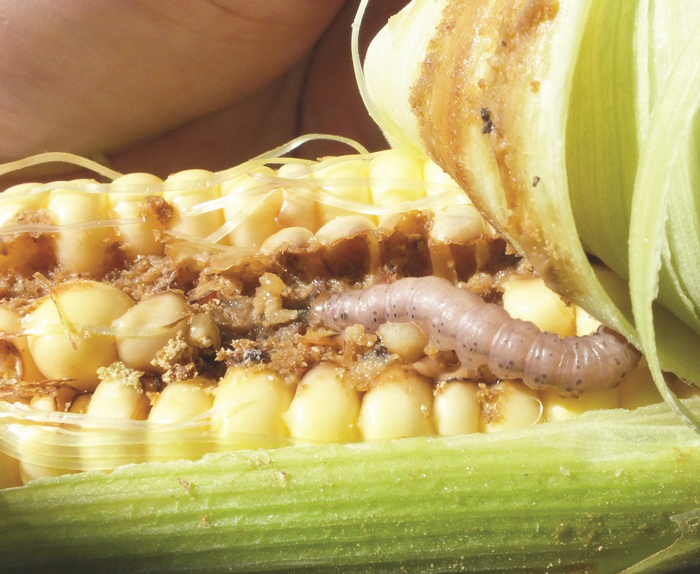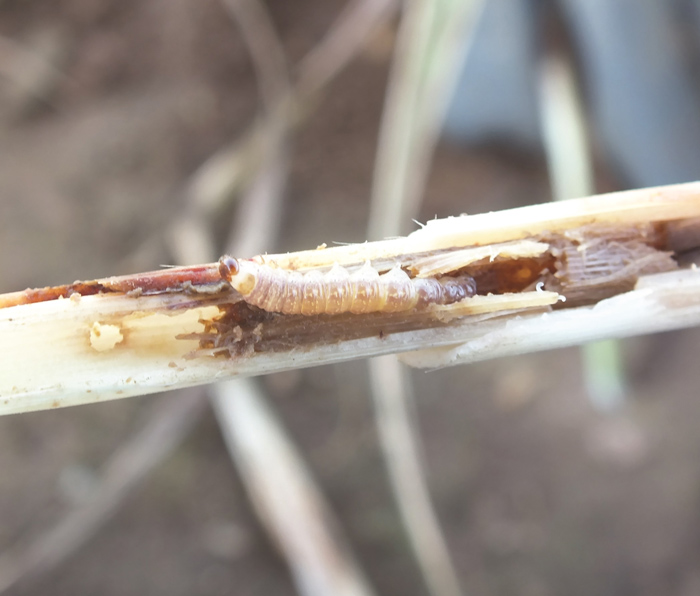December 2022
Lepidopteran pests such as Sesamia cause major damage in maize fields, resulting in significant yield losses. To manage these pests early with the right set of tools, it is vital that farmers can identify them.
PINK STEM BORER
Sesamia, better known as the pink stem borer, occurs mainly along the coastal regions, the Lowveld of Limpopo and Mpumalanga, North West and parts of the maize triangle. Completion of the pink stem borer’s lifecycle varies between six to ten weeks.
Similar to the Chilo borer, pink stem borers start moth flights as early as September and have five overlapping generations per year. Moths are active during night-time and live between two to 14 days. Moths need early maize plantings for egg laying and survival, even though grass is sometimes preferred.
Female moths lay large groups of more than 100 eggs, mainly between leaf sheaths or close to maize cobs. A single female can produce up to 1 000 eggs. Eggs are creamy white in colour but darken before hatching in six to nine days, depending on the host plant and temperatures.
Emerging larvae immediately penetrate into stalks or maize cobs, where they continue to feed and exit the plant if it’s no longer an adequate source of food. Larvae are usually creamy white in colour, with a distinctive pink colouring. The larval stage lasts between three to six weeks, after which pupation occurs within the stem or between the leaves.
Damage
In the summer rainfall area, infestations are more severe during October/November in seedlings and in February/March when cobs are present. The first visible symptoms include damage to the growing points (dead hearts) because larvae bore directly into the stem, without damage to the whorl leaves. Early maize planting under pivot irrigation is very susceptible to pink stem borer attacks.
CONTROL OF STALK BORERS
One of the main options for control is the use of chemical applications, with products registered specifically against stalk borers. However, it is important that chemical control strictly adheres to responsible use, which includes taking the necessary safety measures, alternating chemical groups and spraying at recommended dosage rates as per the product label.
Planting maize cultivars modified with insect-resistant technology (for example, Bt crops) is another option for protection against infestations by stalk borers. For successful stalk borer control and to manage insect resistance efficiently, it is crucial that the area planted with Bt maize includes the planting of a mandated refuge.
Cultural control options include earlier planting dates in the winter or early in the spring to expose overwintering larvae or cover pupae with soil, as moths are not equipped to reach the soil surface when they hatch. Other measures include the control of volunteer maize plants, the selection of varieties with inbred resistance, allowing beneficial insects to play a role and the regular scouting of fields to identify stalk borer infestations earlier rather than later.

The presence of Sesamia larvae is clearly visible in this maize cob.

Sesamia larvae in a sugar cane stalk.
Publication: December 2022
Section: Pula/Imvula
Author: CropLife South Africa